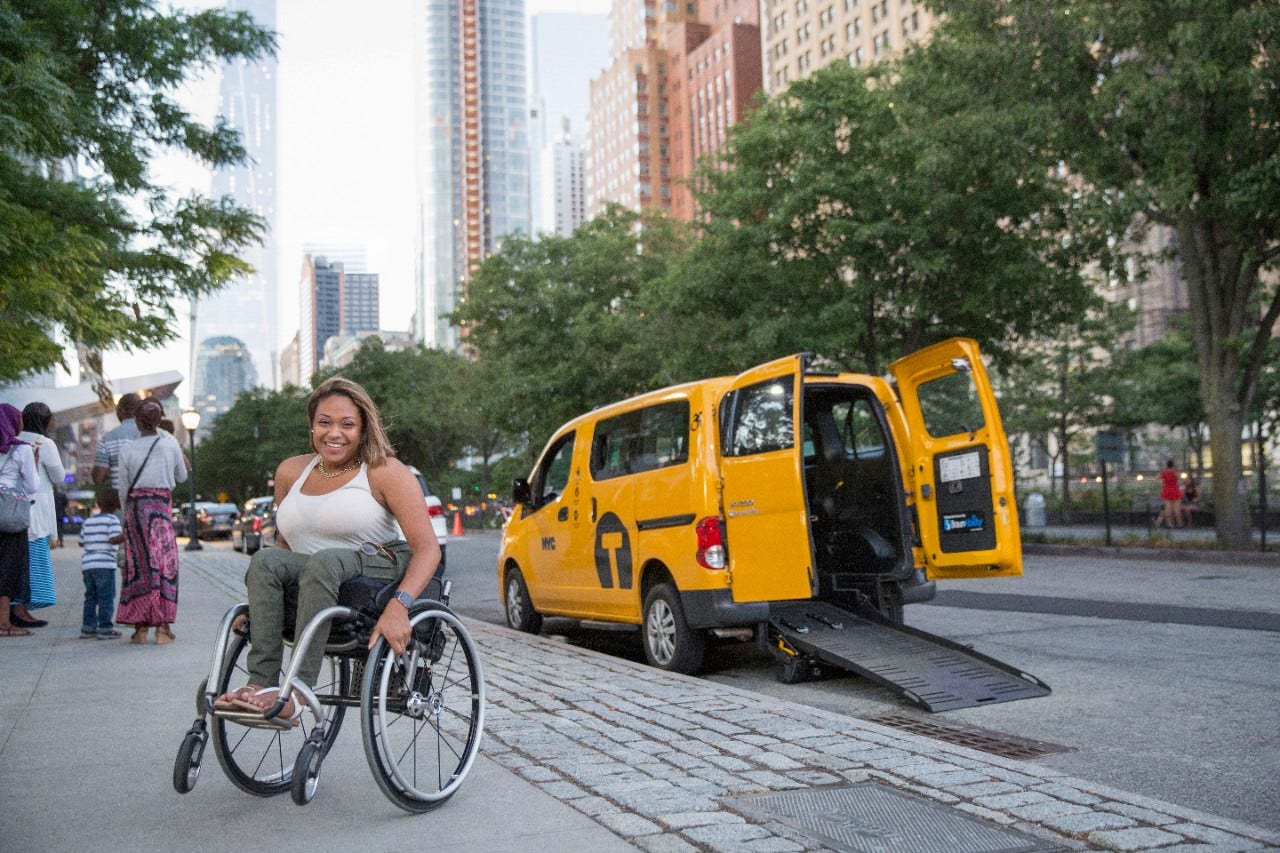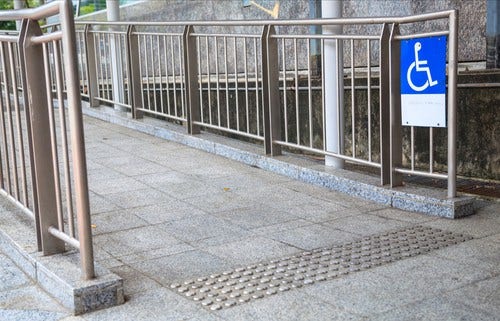
How Do I Make My Business ADA Compliant?
ADA compliance is not just a legal obligation; it is a strategic business decision. By ensuring accessibility, businesses can tap into the substantial spending power of people with disabilities, who collectively contribute trillions to the global economy every year. ADA compliance not only increases revenue for business owners, but it also can positively impact brand loyalty and reputation among people with and without disabilities.
Making businesses ADA compliant goes beyond handicap parking spots, wheelchair ramps, and accessible bathroom stalls. This guide compiles basic ADA compliance standards for business owners, plus tips to make your business more accessible beyond ADA requirements, and frequently asked questions about accessibility requirements for small businesses and private businesses.
Understanding ADA Compliance
The Americans with Disabilities Act (ADA) is a federal law ensuring people with disabilities have equitable access to the same services and spaces as non-disabled people. The ADA prohibits discrimination against people with disabilities in various areas of life, including employment, education, and transportation, and requires most spaces open to the public to be accessible.
Does Every Business Have to Be ADA Compliant?
Most businesses, especially those that serve the public, need to be ADA compliant. Some common businesses and organizations required to be ADA compliant include:
- Restaurants
- Hotels
- Retail Stores
- Theaters and Entertainment Venues
- Healthcare facilities
- Gas stations
- Schools
- Banks
- Museums
- Recreational Facilities
- Fitness Centers
Businesses with fewer than 15 employees, those operating less than 20 weeks a year, historical sites, private clubs, and religious organizations are generally not required to be ADA compliant. Examples of businesses or organizations that may be partially or entirely exempt from meeting ADA requirements can include ski resorts, farmers markets, churches, a small local bakery, or a private club that requires membership. It's important to note the accessibility of these establishments can vary. Some businesses and organizations are highly accessible, even if it’s not required.
What Makes a Business ADA Compliant?
A few standard accessibility features can make a business ADA compliant, including:
- Handicap Parking Spots: Typically, for every 25 standard parking spots, there should be one handicap parking spot. Larger facilities, like hospitals and arenas, must provide a certain percentage of accessible parking based on the total number of parking spots.
- Wheelchair Accessible Bathroom: Restrooms should have at least one wheelchair accessible stall, which includes a wide, outward-opening door, enough space to maneuver mobility aids, grab bars on the back and side walls, and a toilet at a comfort height of 17-19 inches from the ground.
- Wheelchair Accessible Entryway: Businesses should offer at least one accessible entrance. While automatic doors are not required, manual doors generally should not require more than five pounds of force to open. For businesses with stairs at the entrance, installing a ramp or using a portable ramp can provide access for wheelchair users.
- Elevators: Multi-story businesses typically need elevators. However, small buildings under 3,000 square feet might be exempt. Since most businesses are larger than the average U.S. house, which is about 2,500 square feet, you can generally expect businesses with multiple floors to have an elevator.
- Braille Signage: Signs identifying permanent rooms and spaces like restrooms and exits must include braille for individuals who are blind or visually impaired.
- Accessible Website: Websites should adhere to Web Content Accessibility Guidelines (WCAG), enabling navigation via keyboard alone, providing alternative text for non-text elements, and ensuring forms have clear labels. Website content should be easy to read and understand, making it accessible to users with different disabilities.
Going Beyond ADA Compliance
There are a few ways business owners can make their business even more disability-friendly beyond the requirements set by the ADA. These include:
- Installing automatic doors: While not required, automatic doors make it easier for people with and without disabilities to enter or exit an establishment.
- Installing hardwood or tile flooring: Hardwood floors and tile are easier for wheelchair users to navigate. Mats by the entry and exit can also be helpful for those using mobility aids so there is less of a hazard if rain or snow is causing water to be brought in from the outside.
- Provide ample seating: Some businesses require patrons to wait for service, like at a restaurant, a bank, or a medical facility. Having areas where patrons can sit while waiting can be beneficial to people with mobility disabilities.
Specific ADA Requirements for Different Types of Businesses
While entryways, bathrooms, and websites should all be accessible, specific requirements apply to certain types of businesses:
- Restaurants and Food Service Establishments: At least 5% of tables must be accessible, with a height between 28 and 34 inches. For restaurants with fewer than 20 tables, at least one must be accessible.
- Hotels and Lodging Accommodations: Accessible hotel rooms should feature widened doorways, grab bars in showers, and both visual and audible fire alarms.
- Retail Stores and Shopping Centers: Stores should offer wheelchair accessible fitting rooms, if applicable, and checkout counters at a lowered height. Aisles and spaces between clothing racks should be at least 3 feet wide.
- Healthcare Facilities: Exam rooms should be accessible. While not mandated, having wheelchair accessible scales and height-adjustable exam tables is beneficial.
- Entertainment Venues: Concert and entertainment venues must provide ADA-compliant seating. Movie theaters are required to offer personal closed captioning and assistive listening devices for those who are hard of hearing or deaf, as well as audio description headsets for people who are blind or visually impaired.
The above list contains a limited number of examples. For an in-depth look at ADA compliance requirements for businesses, visit the ADA website.
Reasonable Modifications and Accommodations
The ADA requires businesses to make reasonable accommodations to their policies, practices, and procedures to ensure accessibility for individuals with disabilities. For example, a restaurant with a "no pets" policy must allow service dogs to accompany their handlers, as service animals are permitted in nearly all public establishments, including dining areas. Similarly, a clothing store that typically restricts fitting room access to one person at a time should allow a customer to have a companion assist them if needed. Theaters assigning seats on a first-come, first-served basis should reserve specific seating areas for individuals who use wheelchairs, along with companion seats, to ensure all have equal access.
What Happens if a Business Is Not ADA Compliant?
Having an ADA compliant business not only ensures all patrons feel welcome, but it also protects businesses from potential issues like lawsuits, fines, and harm to a company’s reputation. Plus, it means you won't miss out on serving potential new customers. To learn more about making spaces accessible for people with disabilities, check out the related articles section below.




